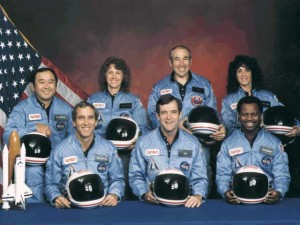The False Promise of Multitasking
Leadership presence requires being present.
– Scott Eblin
Pressure to be more productive in today’s workplace was been escalating for years. And many of us have a false impression that by attempting to do many things at once, by multitasking, we are being more productive.
Car and Driver magazine wanted to figure out just how dangerous texting and driving can be, compared to drunk driving. So they rented an 11,800 foot airport runway in the middle of Michigan and put Jordan (22 years old) and Eddie (37) behind the wheel.
They rigged up a red light in the middle of the windshield to represent brake lights in front of the driver. A passenger had a little remote control to activate the light randomly and measure their response times. They tested the drivers at both 35mph and 70mph. The average reaction time while sober and paying attention was .54 seconds to start braking. Now they had a sober baseline.
Then they asked the drivers to pick up their smartphone and A) read funny quotes from Caddyshack and then B) text funny quotes from Caddyshack while driving. Reaction times varied of course, but all were worse than the undistracted versions of themselves. Some were considerably worse. Reaction times shown below in distance traveled:
- Reading Caddyshack quotes: up to 188 feet before reacting
- Texting Caddyshack quotes: up to 319 feet before reacting
Then they took a break and chilled out on the tarmac to get a good buzz on. They mixed up some vodka and OJ and goofed away an hour or so until the drivers blew a .08 on the breathalyzer. Then they repeated the test. Reaction travel distances shown below:
- Driving with BAC of .08: add up to 7 feet (at 35 mph)
- Driving with BAC of .08: add up to 17 feet (at 70 mph)
That’s right. It’s not even close. Reading or texting on your smartphone is way more impairing than driving drunk. The National Highway Traffic Safety Administration puts the official estimate at 6x more dangerous than driving drunk. The Car and Driver experiment puts it at more like 16x.
Driving is second nature to most of us. It just requires paying attention and following the traffic rules. Obviously texting impairs that. But what about our work? Active listening, mental processing, creative engagement, and problem-solving all require much higher cognitive and collaborative participation. So, when we are texting and emailing while in meetings, or on conference calls, what’s our impairment level? 20x? 30x?
Or a better question might be “What’s the business opportunity loss when the people in my company are constantly distracted?”
It’s not news to anyone that multitasking is debilitating in many ways. The simple action of switching from one task to another is in itself, a cognitive drain. Not only that, simply attempting to multitask lowers your IQ performance to that of nearly an 8-year old.
And while 8-year olds are definitely creative, they are only creative when they’re paying attention.
Put the phone down and no one gets hurt.




 A colleague called me yesterday and said, “I want to talk about commitment.” We had just finished brainstorming an idea over a few days and we both agreed we had something good, quite good, excellent actually. She wanted to have that conversation about accountability, about follow through. Which got me thinking about how to improve the odds of completing anything we set our minds to.
A colleague called me yesterday and said, “I want to talk about commitment.” We had just finished brainstorming an idea over a few days and we both agreed we had something good, quite good, excellent actually. She wanted to have that conversation about accountability, about follow through. Which got me thinking about how to improve the odds of completing anything we set our minds to. Slydial
Slydial From the kitchen window Christopher could see his wife was getting frustrated. Over and over again, Dana was running awkwardly, hunched over, down the driveway while holding on to the back to Will’s bicycle. At the time, six year old Will was still terrified of riding without his training wheels, or without his Mom holding him up. Christopher watched as his wife and son repeated the same failed routine again.
From the kitchen window Christopher could see his wife was getting frustrated. Over and over again, Dana was running awkwardly, hunched over, down the driveway while holding on to the back to Will’s bicycle. At the time, six year old Will was still terrified of riding without his training wheels, or without his Mom holding him up. Christopher watched as his wife and son repeated the same failed routine again.
